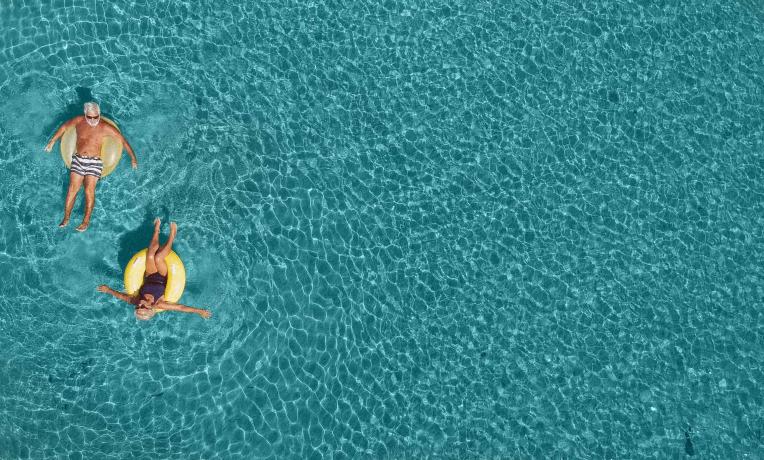The double life of water
Water is a peculiar liquid. In fact, it's thanks to some of its peculiarities that our "blue" planet looks the way it does, and that life has evolved most of the characteristics we recognise today. ERC grantee Prof. Anders Nilsson has made his career out of studying water, in particular trying to understand the secret double life water leads at extremely cold temperatures.

The way water behaves is weird. We know this if we've ever observed ice floating. Its surface tension is higher than that of other liquids, it occupies less space as it melts, it's an incredibly good solvent - water possesses more than seventy unusual properties compared to other fluids. In actuality, the real question marks arise when water finds itself at extreme pressure and temperature conditions, and this is where Prof. Nilsson comes in.
The researcher, from the University of Stockholm, and his team have spent years designing experiments to be able to manipulate water under these conditions. They have come to the conclusion that water, at particularly low temperatures, behaves as two separate liquids. These two liquids, or better, these two states of the same liquid, have different density and structure, and are usually indistinguishable. The first hints that something is happening start to occur when measurable density begins to fluctuate on different length scales, under -44°C. Even colder, below a so-called critical point, and the two phases coexist, without mixing, in a solution not dissimilar to oil and water.
This idea, which had been hypothesised in the past, proved difficult to test before Nilsson's work, because of the need to maintain water in its liquid state at temperatures below zero. This process, known as supercooling, allowed the team to experimentally observe the phenomenon happening in small droplets using a technique known as x-ray correlation spectroscopy.
The findings, which Discover magazine cited as one of the 100 scientific discoveries in all disciplines of 2017, will shed light on the behaviour of water, something invaluable in a world that owes so much to this liquid in terms of its existence. What will happen to our planet as climate change impacts the melting of ice caps? How will we be able to face growing water stress? Or even, what is the link between the emergence life and water's properties? All these burning questions could benefit from a more thorough understanding of this mysterious liquid.
Anders Nilsson received a PhD in physics at Uppsala University, Sweden (1989) in the laboratory created by the Nobel Laureate Kai Siegbahn. He is currently professor in Chemical Physics at Stockholm University. Before joining Stockholm University in 2014 he was 15 years as a professor in Photon Science at Stanford University. Author and co-author of more than 320 scientific papers, one edited book and one non-scientific book. His work is cited more than 24000 times with a h-index 80 on Google Scholar. He has participated in a large number of international conferences of which more than 160 as plenary, keynote or invited speaker. He has organized 6 summer schools, 2 international conferences, and 6 workshops. Over the years he has supervised or is supervising 10 Master-students and 35 PhD students and 30 post-doctoral researchers. His work on water was illustrated on the cover of Nature in 2014, in 2004 Science Magazine selected it as one of the scientific breakthrough of the year and in 2017 as one of the top discoveries of the year in Discovery Magazine. He received the Lindbomska Award at the Swedish Royal Academy of Science, the Royal Oscar Award at Uppsala University in 1994, the Shirley Award in Berkeley 1998, the Humboldt Award for senior scientist in 2010 and was awarded Honorary Doctorate at Denmark’s Technical University in 2015. His research interests include synchrotron radiation and x-ray laser spectroscopy and scattering, chemical bonding and reactions on surfaces, ultrafast science, heterogeneous catalysis, electrocatalysis in fuel cells, photocatalysis for converting sunlight to fuels, structure of water and aqueous solutions.


